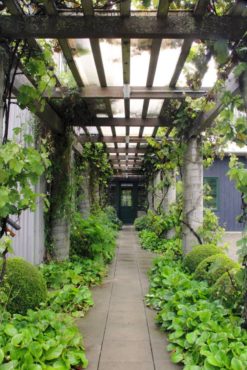
Where does alcohol come from? If you answer from brewers and distillers, you are correct — yet before the intermediary, the ingredients originated from a garden.
Growing plants for adult beverages is all about freshness and flavors, since freshness equals flavor. Consumers choose the best homegrown edibles for better flavor. Supermarkets sell mostly tough, tasteless produce selected for shelf life.
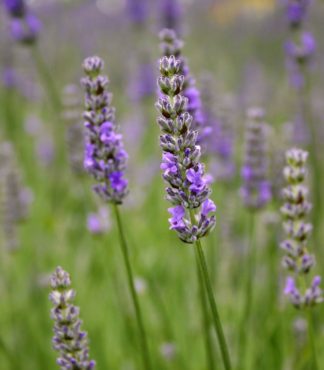
Why is fresh flavor and aroma so important in drinks? When you sip a beverage and roll the liquid over your tongue, it is all about chemistry. The concentration of flavor in the drink is a combination of taste and aroma molecules. Your sense of smell and taste combine to give you the flavor. Hold your nose as you sip the same beverage and you experience an entirely different taste without the aid of your olfactory nerves. The nose perceives infinite flavors intimately, while the tongue tastes only five.
The beverage garden is as simple as growing a few herbs in pots, or as involved as a full-fledged orchard. Decide what beverages you want to make and what you want to grow to put in them. Then you can increase your bragging rights from brewing, fermenting or infusing your own, to being able to say, “I grew the ingredients in my garden!” The challenge is to make your drinking garden interesting, bountiful and beautiful.
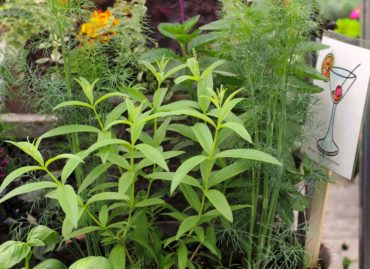
The Beer Garden
With the proliferation of craft beers brewed by hobbyists and serious brew masters, brewing is now a culinary craft. Many people no longer want to settle for watered-down, cheap brews from the big beer companies. Craft beers have reached a level of sophistication and taste, with brewers always looking for the next best flavor. Beer made with raspberries, lemons, mint, even spruce needles for a very specialized spruce beer is not so uncommon anymore.
The next step to brewing may be obvious to some: Grow your own ingredients and brew with the freshest, best tasting herbs, fruits and vegetables.
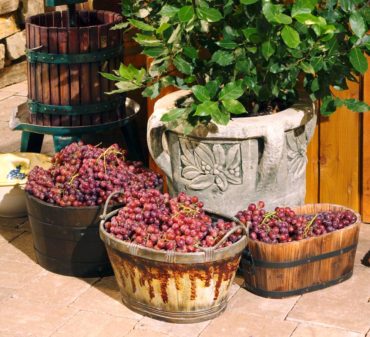
Hops are fascinating and the most often used ingredient in beer. It’s interesting to note that the plants are closely related to cannabis. Most consider the plant a vine, yet technically, it is called bine that twines around an object clockwise. The part that gives beer its hoppy taste is lupulin, which is a yellow powder on the cones that are comprised of scale-like bracts.
Hops make great landscape plants, and the maritime climate is favorable for growing them. People grow them in their garden for their looks alone. Now add some herbs at the base of the bines and a large pot with a Meyer lemon tree and a few raspberry shrubs, and you are well on your way to an incredible brew that began in your garden.
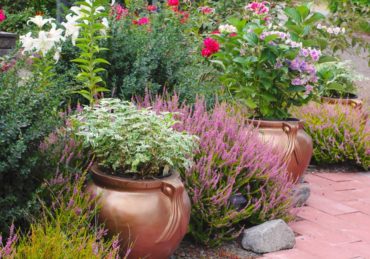
Don’t forget a couple of chairs and a table in a sitting area in your garden where you can relax with a cold one — hopefully your home-brew — after a long, hot day. You can grow a wall of hops as a backdrop to your sitting area and enjoy your beer in privacy.
The Liqueur Garden
Liqueurs are the easiest adult beverage to make and like beer, you can grow most of the ingredients in your garden. There are about as many different liqueurs to make as there are ingredients you can grow for it.
Let’s start with herbs. Historically used for infusions many centuries ago, liqueurs came about to flavor the medicine monks distilled for healing purposes. The horrid-tasting medicines had a taste like moonshine. Sugar and aromatic spices and herbs provided the means to help the medicine go down, and thus liqueurs came into being.
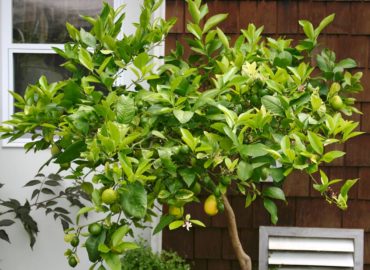
In the 17th century, monks came up with a liqueur called chartreuse, which has a complex recipe of 130 different herbs. Even today, the recipe is a closely guarded secret. It’s not necessary to make a beverage using that many herbs; nevertheless, it shows that there are endless possibilities of flavors to produce from the garden.
Most herbs want full-sun positions and if you have room, you could grow those 130 herbs. Just be aware that many of them have Genghis Kahn attitudes of conquering the world around them. Site them carefully or grow the aggressive ones, such as mint, in containers. Most herbs thrive in well-drained soil and produce the best flavor in infertile soil. In fact, if you fertilize them, you can end up sacrificing the essential oils — the reason for growing them.
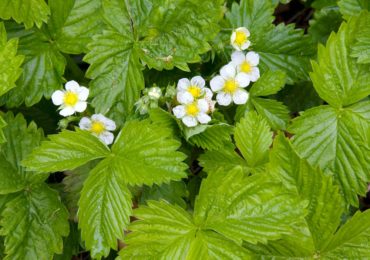
Fill your liqueur garden with fruit, herbs and vegetables, even throw in a few nut trees. Liqueurs made with just about anything edible sometimes result in odd combinations — such as cucumber and mint or basil and sour cherries. Sounds strange? Combined in a liqueur, it is quite tasty.
Fruits are necessary for a liqueur garden but you can also use them to make wine, soda, even beer.
A substantial structure for grapes like a pergola or arbor is a fine addition to a bountiful garden. Alternatively, you can train them to grow on a grape trellis like the ones used in vineyards.
New varieties of pixie grapes (Vitis vinifera ‘Pinot Meunier Purple’ and ‘Pinot Meunier White’) that grow only a few feet tall are suitable for growing in containers or the garden. They are new to the market and you should see them offered soon at the local nurseries.
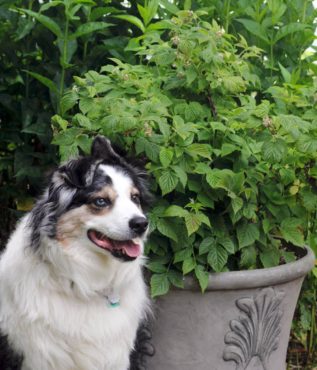
Berries love this region. Fill your drinking garden with a leafy presence of the ground-covering Alpine strawberry. These strawberries do not keep well, so pick them and use them right away. The fruit is small and might be best combined with other fruits for your beverages.
Runner strawberries can romp around your plantings, yet they will thrive in hanging baskets and containers, where you can keep them high above the slugs.
You can grow raspberries the old-fashion way, down long rows, where you can easily prune and harvest them. New bush raspberries such as Rubus ‘Nr7’ (tradename Raspberry Shortcake) can grow in containers or in the garden. They are thornless and only grow a few feet tall — bonus qualities to appreciate.
Blueberries are stunning shrubs in the landscape. Incorporate them into your borders or line them up in your liqueur garden as a hedge. Cultivars such as ‘Darrow’ give you supersized blueberries. The ornamental and prolific fruiting ‘Sunshine Blue’ has pink flowers and evergreen leaves. The deciduous cultivar ‘Elliot’ gives fantastic fall color and is a late-season berry. Come fall, it covers itself in sizzling-red leaves.
































Comments